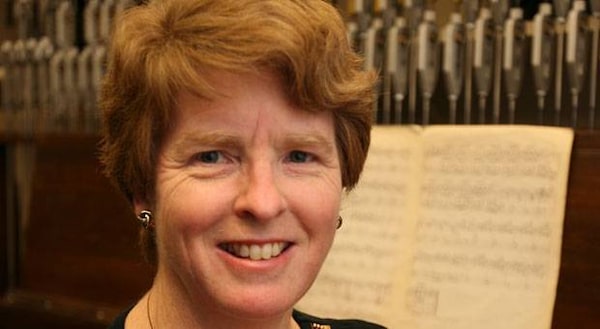
Q&A with Dr. Andrea McCrady, Canada's Dominion Carillonneur
What can the audience expect at the Stratford Carillon Festival from August 5 to 13?
My colleagues Gordon Slater, Roy Lee and Andrée-Anne Doane and I will serenade the folks on the street in 14 free, public recitals on an instrument with 48 bells that arrives by transport truck. The Chime Master Mobile Millennium Carillon is the largest of three mobile carillons currently touring North America, and this is the second summer that the instrument, which has its home in Ohio, is coming to Canada. We are thrilled to have it back.
You usually play in Ottawa's Peace Tower but have also performed on the mobile carillon – how do they compare?
The Peace Tower carillon has 53 bells and the mobile carillon has 48. While the Peace Tower's biggest bell weighs over 10 metric tonnes, the mobile carillon's biggest bell weighs one metric tonne. No two carillons are alike. Even if they had the same number of bells of the same weight, the bells would be made by different bell foundries and have their own unique voices. The mobile carillon has a light voice compared to the great voice of the Peace Tower since the tower is part of the instrument; it lifts the bells up and becomes a sounding box.
What are the challenges of performing on such different instruments?
The keyboard of the mobile carillon is different – it's a European-style keyboard – so it isn't as easy as sitting down to your neighbour's piano, but a carillonneur's training includes being able to adapt to different instruments quickly. On a mobile carillon, the lighter bells are physically easier to play, but there are some additional challenges. People usually don't see the carillonneurs because we typically perform in towers. With the mobile carillon, we are only about two metres off the ground, so the audience can watch us perform. This is delightful, but from my experience I know that people are so curious about this unique instrument that some want to climb up the ladder we use to get to the keyboard. I've told the organizers that we may have to take the ladder away during the performance. And since we play out in the open, it can get windy and we need to have someone hold the music to make sure it isn't blown away.
Do the different instruments require different musical arrangements?
Since the bells of the mobile carillon are closer to the ground, they are lighter and don't overwhelm people with too much sound. We tend to play musical arrangements that sound better on light bells. While I am playing a similar program on the Peace Tower periodically through the summer, the arrangement for Stratford will be different.
What is the program you'll play in Stratford?
I will be playing two different programs that are each 30 minutes long. When [Stratford Summer Music artistic producer] John Miller contacted me, I decided to put together a repertoire that is inspired by Shakespeare's plays – it's called The Bard and Bells. This was a fun project for me. The first performance, which I'll play on Saturday, August 5, at 7 p.m. takes its inspiration from Shakespeare's contemporaries and classical composers. The second program, played on Sunday, August 6, at 1:15 p.m., comes from the stage and the screen – music from Broadway plays and movies.
Why did you choose to play the carillon?
When you ask musicians about how they decided on their instruments, I believe many would say there is something about a voice of the instrument that speaks to them. I love the sound of bells, and I always tell people I caught "bell fever." I've now been a carillonneur for over 40 years and came to the Peace Tower in 2008.
This content was produced by Randall Anthony Communications, in partnership with The Globe and Mail's advertising department. The Globe's editorial department was not involved in its creation.